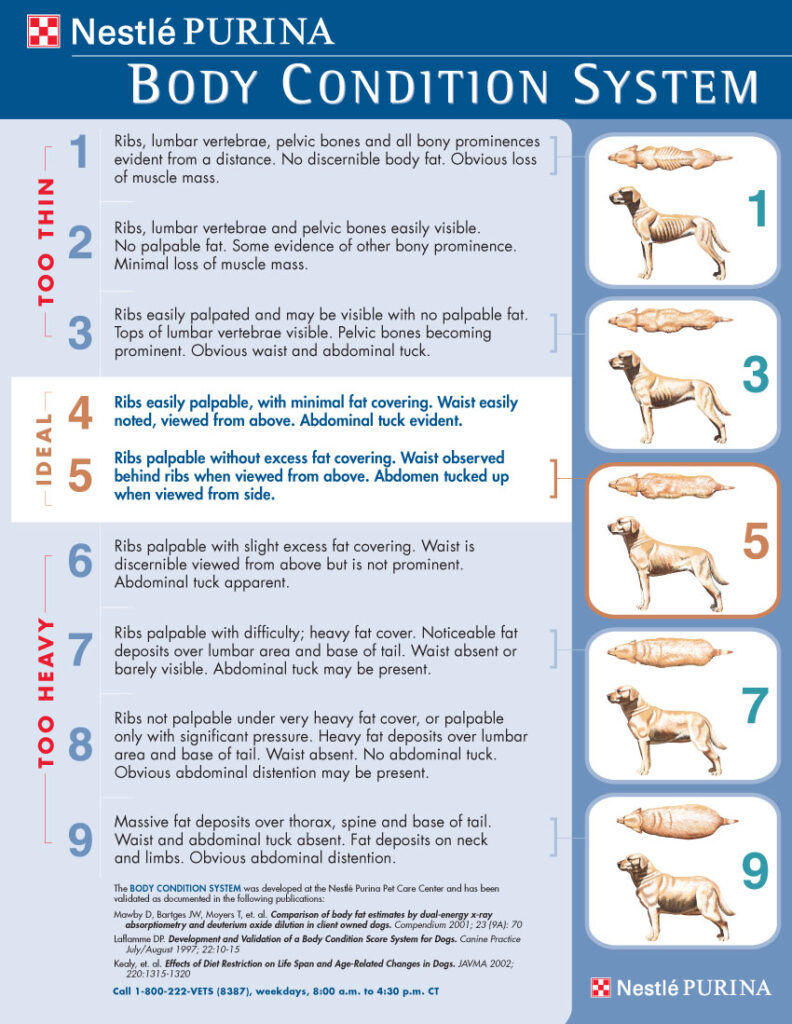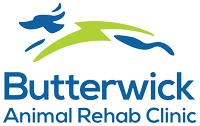How to recognise signs of pain in your dog and 7 steps for what to do about it if they are…
1. Is my dog in pain?
It’s one of the most common questions we get asked. Dog owners are likely to be the first to notice there is something wrong with their dog if they know what to look for. Sadly, our dogs can’t tell us in the traditional human sense, but there is no doubt when its food time for most owners. The truth is, dogs don’t always show signs of pain by yelping, crying or whining, they will usually only do this if in severe pain. If we can notice the signs of pain or discomfort, then we can help dogs become pain free and more active sooner. Typical signs of your dog being in pain are:
- Decreased appetite
- Panting when moving
- Not using a limb at all or limping
- Difficulty lying down or rising up
- Difficulty going up or down on the stairs or over steps
- Difficulty getting on/off the sofa or bed
- Not wanting to go for their usual walks or being worse during/after a walk
- General decline in their ability to move like they once did
- Looking sad or changes in facial expressions
- Struggling to go to the toilet
2. Home Environment
It is not uncommon for dogs to become more reluctant to move around the home if they are in pain. Whether that is because of the types of surface (laminate/wooden flooring) or going up or down stairs. Here are some ideas you may consider implementing into your home:
- Ramps to higher surfaces (sofa/bed/car boot) to avoid jumping with painful joints
- Stairs – limiting access to the stairs when you are not around may reduce the chances of them falling or stumbling. Some owners put a “baby gate” to restrict access at either the top or bottom of the stairs
- Bedding – is it too hard or too soft? your dog is likely to spend a good deal of their day on their bed sleeping and ensuring they have the right support can reduce problems getting on/off and their comfort levels
- Runners/mats/rugs – putting these down on slippy floors can reduce slips/trips and improves your dogs’ confidence, reduces the chances of them hurting themselves
- Raised feeding/drinking platforms to reduce stress on your dog’s spine and joints
3. Is your dog overweight?
Maintaining a good diet and ideal weight is really important in managing their pain levels. Many owners look at their dog’s main food but don’t know what a good diet is. Speaking to your Vet, Vet nurse or Vet rehab team can often help demystify the confusion on the many feeding options out there. Treats can often be an area that is all too easy to overlook, who doesn’t like to give their dog a treat? how many and what type of treats your dog receives however can have a dramatic impact on their weight. Over time this weight gain can put added pressure on joints and lead to reduced activity. Take a look at the image below and see how your dog stacks up.

4. Changes in behaviour
This may be one of the main ways your dog lets you know it is in pain. This may take one or many of the forms mentioned above or they may become aggressive, nervous, reclusive or just generally not want to do what they normally do. If you notice any of these then speak to your Vet or Veterinary Physiotherapist.
5. Activity
Dogs in pain will often not want to engage in activity like they used to. This is typically walking and play. During walks, letting your dog set the pace and allowing them time to rest either during the walk or afterwards can help to manage pain levels. Playing can often lead to jolting/jarring and particularly twisting, which can further increase pain and make your dog reluctant to use its limb(s). Often owners will describe this as the moment they noticed pain in their dog.
6. Speaking to your Veterinarian
Your vet may diagnose a particular problem and then prescribe some medication for your dog to help with pain relief, but this can often just mask the pain and not tackle the underlying cause. It is important to follow your vet’s advice on how and when to administer any medication. If your dog is still struggling after an initial course of medication it may be time to look at seeking the help of a Veterinary physiotherapist at Butterwick animal rehab to help alleviate some of the symptoms your dog is experiencing.
7. Speaking to a Veterinary Physiotherapist
Veterinary Physio’s are ideally placed to give you lots of help and information. We will discuss with you any concerns or questions you have; assess your dog’s current condition and start to address your dog’s problems, getting them back to normal so you can return to things you love doing with your dog. At Butterwick we are a “one stop shop” for physical therapy and hydrotherapy. This means you don’t have to visit multiple people/places and your dog settles easily, ultimately your dog is happier and back to normal quicker.
We understand that many dog owners are unsure of what to do if their dog is in pain. We deal with this every day! Our clinic is built on having a great relationship with dogs and their owners. We have a great deal of experience and a reputation in making a positive difference in dogs’ lives.
Whilst these simple things will start to make a difference in your dog, they will likely need more than this. If you’re ready to take it to the next step and really start making a big difference in your dog but not sure that Veterinary physiotherapy and hydrotherapy would help, keep reading.
Physiotherapy does so much more than just heal your dog’s injuries, immobility, or stiffness. In reality, it offers your pet – and you – somewhere in which anxiety and stress is eliminated, thereby giving you peace of mind about your dog’s quality of life. No one wants to see animals anxious or in pain. As so many of our clients have mentioned, physiotherapy at Butterwick Animal Rehab Clinic ignites in your dog a real zest for life, a sparkle in their eyes, and energy levels owners have not seen for a long time. We want this for your dog, too.
What to do next?
CALL US on 01325 353260 or 07741651000
EMAIL US on [email protected]
CLICK HERE TO ENQUIRE ABOUT COST AND AVAILABILITY
We’re always excited to hear from you; we look forward to chatting with you about how we can get your furry-friend back to health, happiness, and a pain-free life!
Still not sure? These are some of the things that rehab can do for you and your dog:
- Treats the root cause of the problem, thereby offering a permanent solution to the pain, not a temporary Band-Aid.
- Is non-invasive. No surgery. No needles. No fear.
- Helps to reduce pain. Alongside your Vet who may prescribe medication, we can help reduce that pain and get your dog active again.
- Reduces restlessness: less pain means better sleep, both for you and your dog.
- Increases the mobility of your dog, thereby giving both you and your furry friend back the opportunity to do the activities you both love.
- Increases your dog’s energy levels, igniting in him/her a spark that you will not have seen since puppyhood. Think “Eeyore to Tigger” in a few sessions!
- Increases fitness levels. Your dog will surprise you by how much further, how much faster, and how much more willing he/she is to run and play.
- Gives you the tools to help your dog on his/her healing journey, thereby ensuring that your pet is given a jump-start to health right from home.
- Gives you answers. One of our great joys is helping owners get the answers they need in order to put their minds at rest. When you have answers you can understand… you can make the right choices.
- Helps you read the signs. It’s not enough to know that your dog is in pain – physiotherapy helps you notice the small but telling ways your dog is trying to communicate his/her discomfort to you and gives you the things to help them too.
DISCLAIMER
We make every effort to ensure that we accurately represent the injury advice and prognosis displayed throughout this report. However, examples of injuries and their prognosis are based on typical representations of those injuries that we commonly see in our physical therapy clinic. The information given is not intended as representations of every individual dog’s potential injury. As with any injury, each dog’s symptoms can vary widely and each dog’s recovery from injury can also vary depending upon background, genetics, previous medical history, application of exercises, posture, motivation of pet owners to follow Veterinary Physiotherapists advice and various other physical factors. It is impossible to give a 100% complete accurate prognosis without a thorough physical examination and likewise the advice given for management of an injury cannot be deemed fully accurate in the absence of this examination from our Vet Physio at Butterwick Animal Rehab Clinic. Our rehab team are unable to make a diagnosis due to the legal constraints of the Veterinary Surgeons act. Significant injury risk is possible if you do not follow due diligence and seek suitable professional advice about your dog’s injury. No guarantees of specific results are expressly made or implied in this report.
